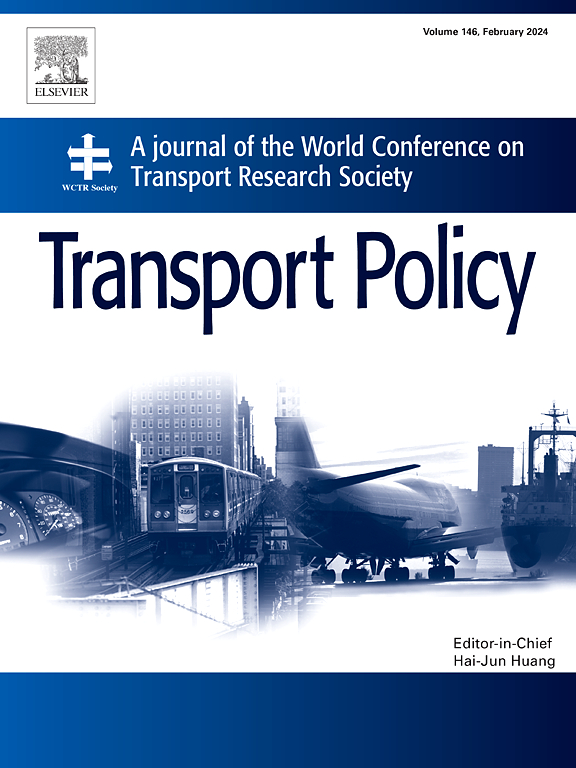How successful is my DRT system? A review of different parameters to consider when developing flexible public transport systems
IF 6.3
2区 工程技术
Q1 ECONOMICS
引用次数: 0
Abstract
The digitisation of transport services has led to the implementation of so-called demand-responsive transport (DRT) systems with varying setups and goals around the globe. Numerous approaches have been made to account for differences in the local circumstances and regulations to achieve the most successful outcome for those services in both, rural and urban areas. The reasons for their widespread popularity are the envisaged benefits of economically reasonable operations combined with ecologically and socially beneficial traffic. Yet, while some DRT systems persist over an extended period, many fail to become a permanent passenger transportation option, especially in rural areas.
This paper shall explore parameters suited to measure the success of a DRT system and structure their inter-dependencies. Firstly, the paper presents types of flexibility and their different gradations in order to classify varying systems. Secondly, suitable and already used parameters to measure figures of DRT systems like travelled distances and vehicle occupations are examined and with their respective application cases lucidly compared. Thirdly, the paper proposes a four-step evaluation framework and discusses existing and new approaches to comparing the success of different flexible transport systems and future possibilities.
我的 DRT 系统有多成功?回顾开发灵活公共交通系统时需要考虑的不同参数
运输服务的数字化导致了所谓的需求响应型运输系统(DRT)在全球范围内的实施,其设置和目标各不相同。为了使这些服务在农村和城市地区都能取得最成功的结果,人们采取了许多方法来考虑当地环境和法规的差异。这些系统广受欢迎的原因在于其经济合理的运营与有益于生态和社会的交通相结合的预期效益。然而,虽然一些数字捷运系统能够长期存在,但许多系统却无法成为永久性的客运选择,尤其是在农村地区。本文将探讨适合衡量数字捷运系统成功与否的参数,并构建其相互依存关系。首先,本文将介绍灵活性的类型及其不同等级,以便对不同的系统进行分类。其次,本文研究了用于衡量 DRT 系统数字的合适且已使用的参数,如行驶距离和车辆占用率,并对其各自的应用案例进行了清晰的比较。第三,本文提出了一个四步评估框架,并讨论了现有的和新的方法,以比较不同灵活交通系统的成功与否以及未来的可能性。
本文章由计算机程序翻译,如有差异,请以英文原文为准。
求助全文
约1分钟内获得全文
求助全文
来源期刊

Transport Policy
Multiple-
CiteScore
12.10
自引率
10.30%
发文量
282
期刊介绍:
Transport Policy is an international journal aimed at bridging the gap between theory and practice in transport. Its subject areas reflect the concerns of policymakers in government, industry, voluntary organisations and the public at large, providing independent, original and rigorous analysis to understand how policy decisions have been taken, monitor their effects, and suggest how they may be improved. The journal treats the transport sector comprehensively, and in the context of other sectors including energy, housing, industry and planning. All modes are covered: land, sea and air; road and rail; public and private; motorised and non-motorised; passenger and freight.
 求助内容:
求助内容: 应助结果提醒方式:
应助结果提醒方式:


